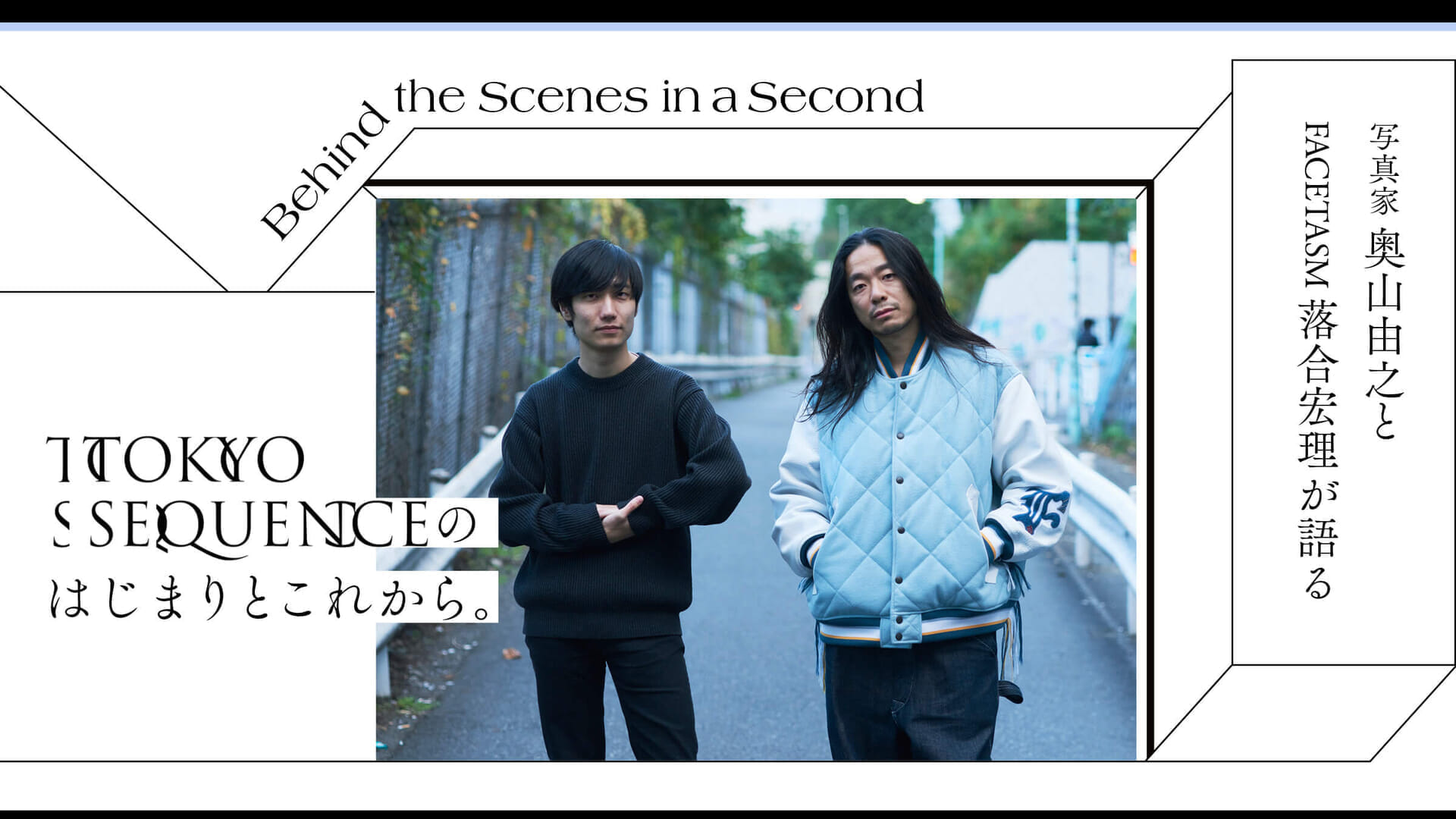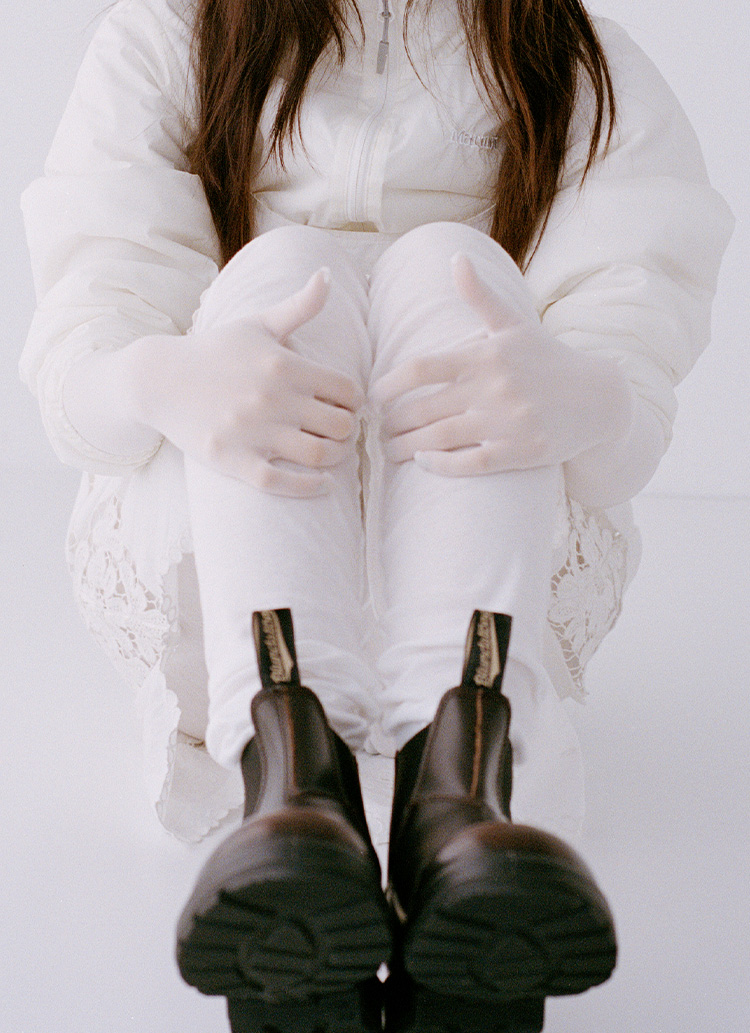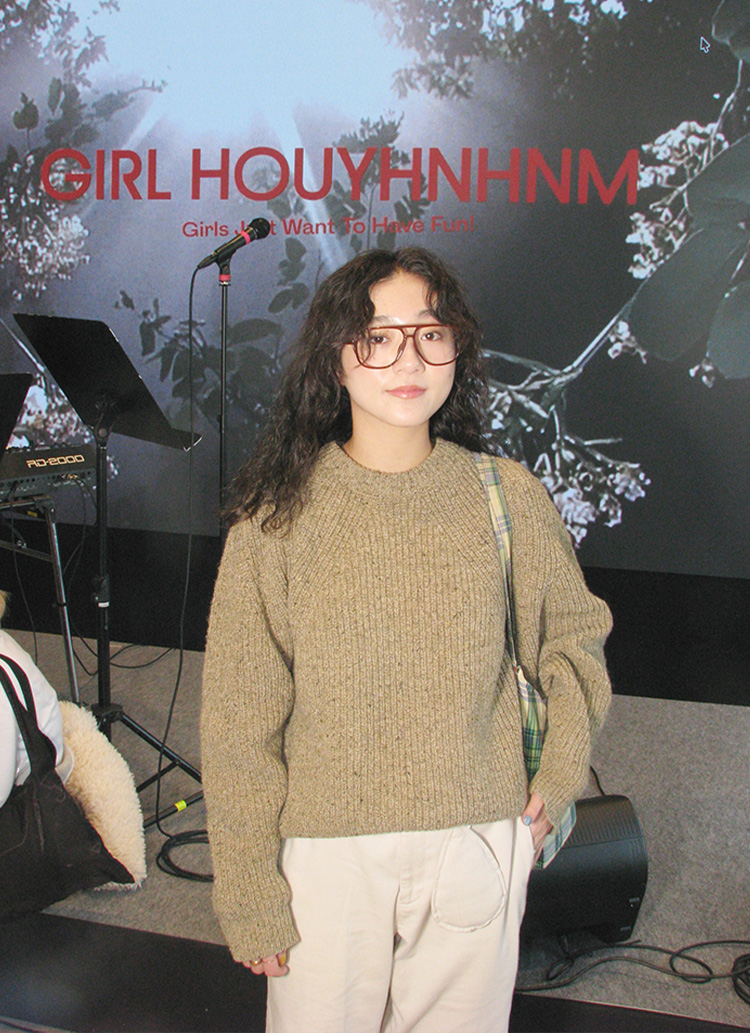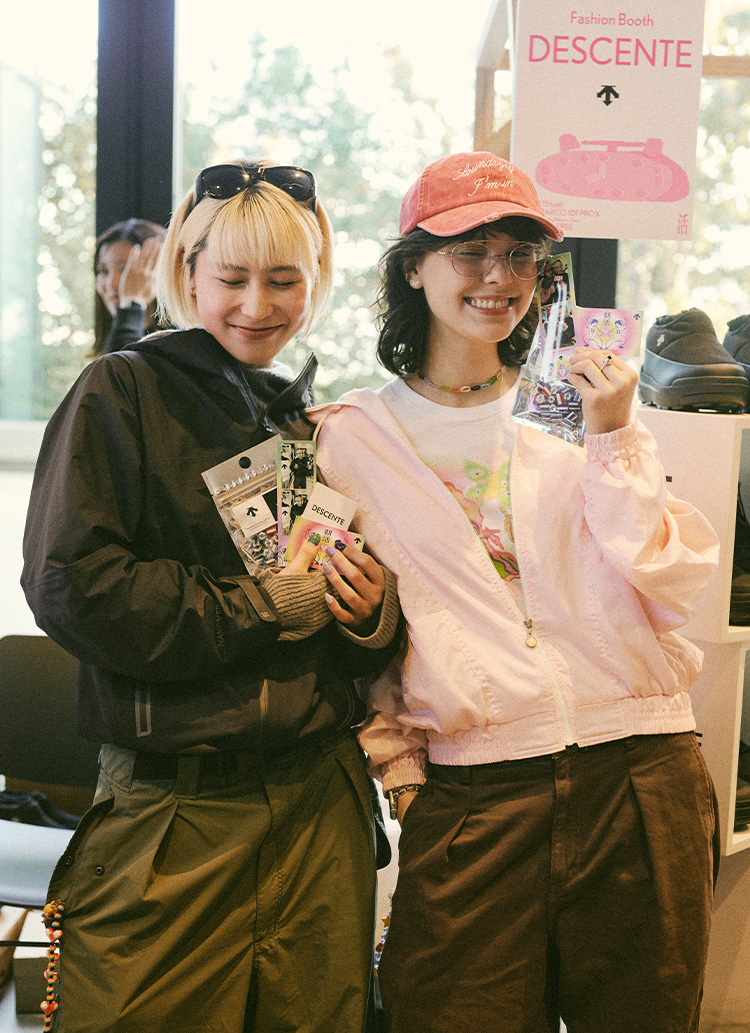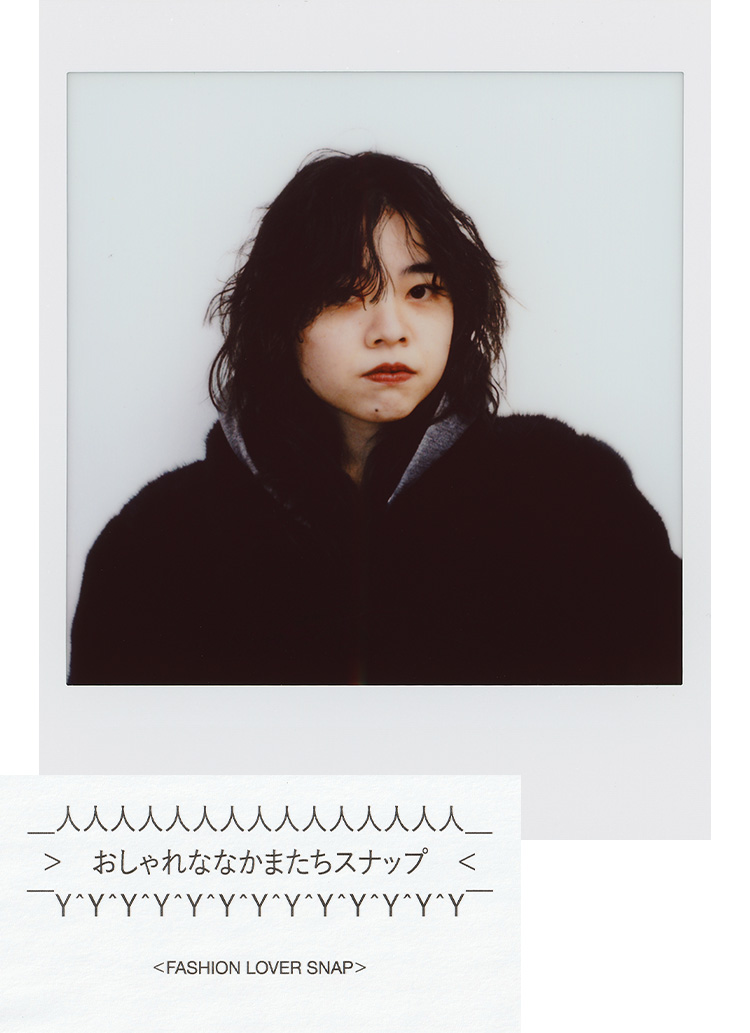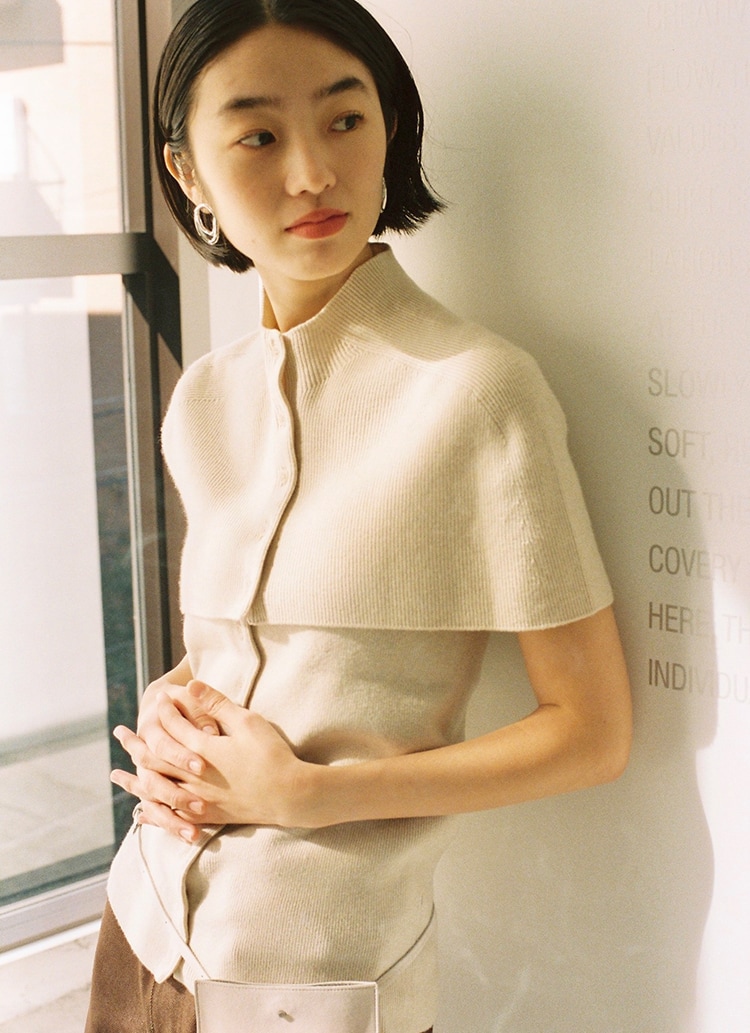With an 8mm film camera,
A way of photographing people, cities, and fashion that preserves change.
Okuyama:. 3 frames, each shot with an 8mm film camera and burned solid, are strung together, each frame differing by a mere 0.0 seconds or so: the first row is a person, the second row is fashion, and the third row is the city. Even in the slight difference in time, less than a second, there is a change in the blink of an eye or the passing of a car in the background. If I just shoot 200 subjects the way I want to shoot them, it is likely to end up with the same expression no matter who I shoot, but by shooting a variety of people without changing the format, I can capture the individuality of the people I am shooting. However, by photographing a variety of people without changing the format, I am able to catch a glimpse of their personalities, and there are slight changes within a continuous sequence. Photography is about capturing a moment in time when things are changing, such as changes in the city, changes in fashion, or the growth of a person, so the fact that we were able to depict this process made the technique quite suitable for the project. I might not have had any other choice but to use this method.
Ochiai:Hearing that story made me think, furthermore, that in a sense, I was watching a drama. Just a brief drama for a brief moment, though it's still going on, since we're aiming for 200 people. ......
Okuyama:It is not like communicating with any one subject for a long time and building up a relationship with them, nor is it like taking a lot of pictures and taking a lot of time and taking a lot of pictures and taking a lot of pictures and taking a lot of pictures and taking a lot of pictures and taking a lot of pictures and taking a lot of pictures and taking a lot of pictures and taking a lot of pictures and taking a lot of pictures and taking a lot of pictures. . I don't mean that in a negative way, but I think there is a dryness to it. The format is the same, so I don't change anything depending on the subject. I don't shoot in a place where I can be loud, so I communicate in a whisper during the shoot. . I shoot multiple people in a day, so time and density are thin. I have never shot in this way myself, so the sense of distance is a new one for me. It is interesting to me because I feel that even though it is something I created myself, it does not feel like something new that I created myself.
Ochiai:. Fashion designers don't meet people very often. . So, on the contrary, I walk about 10 minutes to the shooting location, where the subject comes to me, I do their hair, makeup, and styling, and Mr. Okuyama waits for them. . I enjoy the time I spend talking with the subjects along the way.Mayu Yokota. I quite like the 10 minutes we spend talking about our favorite foods, asking about our future, and other such trivial matters during the filming of the movie. . The moments when we walk through the streets of Tokyo in this way are comfortable for me.
Okuyama:I wondered what they were talking about. I was honestly worried that that travel time might be a bit of a holdover or something.
Ochiai:Not at all. . We talk about the music we like, and on the contrary, we talk about ourselves. . about my goals for the future, about the current situation in Tokyo, and about my feelings. It is a time that I cherish. In this project, there are people I am meeting for the first time, as well as friends I am close with, so I feel as if I am walking around Tokyo while talking with all kinds of people.

Okuyama:I often go to the shooting location ahead of time , so it is quite difficult for me to communicate and talk about my intentions for the shoot while in transit.Taiga NakanoI am also good friends with Mr. Kurokawa in private, so after the shooting was over, we would go back to the waiting room and have a lively conversation. I used to want to have that kind of communication before the shoot. Another fresh point about this project is that there is almost no overlap between the people FACETASM would like to have on the set and the people I would like to photograph. It is also refreshing to photograph people who I would not normally meet, but who would. I get to know people I wouldn't normally meet, and in the same way, Mr. Ochiai must be in contact with people he wouldn't have met without this project. . So when I look at them when they come to the shooting location, I sometimes think that they are a fresh lineup of people who are sometimes uncomfortable with each other.
Ochiai:That's true. Me too.Tetsuya Akiyama of GRILLZ JEWELZbut the scene being filmed by Okuyama-kun was very interesting to watch, as it felt uncomfortable in a good way. After appearing in this project, I heard that there was a good response from people wearing "grillz jewelz" overseas. I hope there will be kids and such in the future.
Okuyama:Yes . You can have really young children , or you can have elderly people. I think this is a project that will have a diverse range of people, not just one aspect. There are a wide variety of people in Tokyo who are involved with us, such as company managers, location bus drivers, and so on. By including actors, actresses, models, and musicians among these people, we will be able to portray the diversity of the people of Tokyo.




